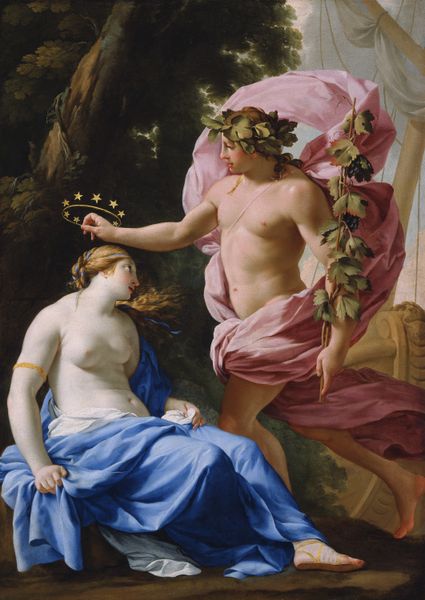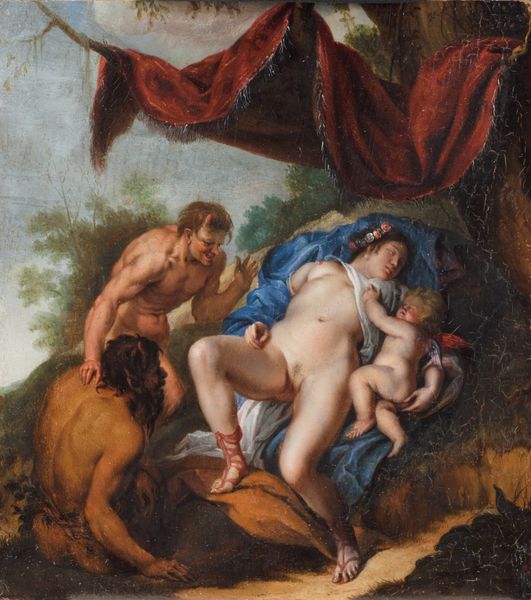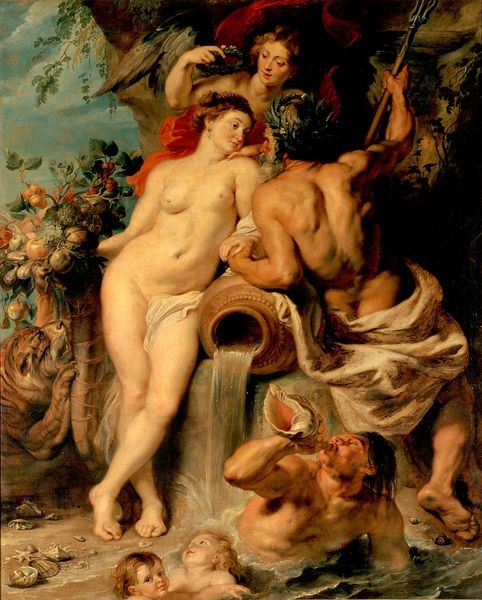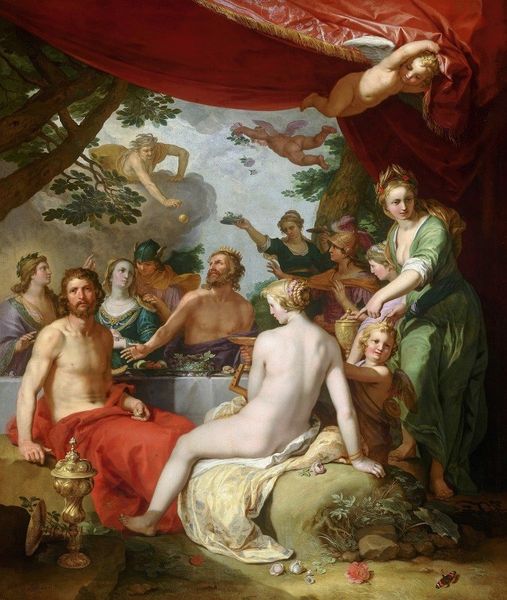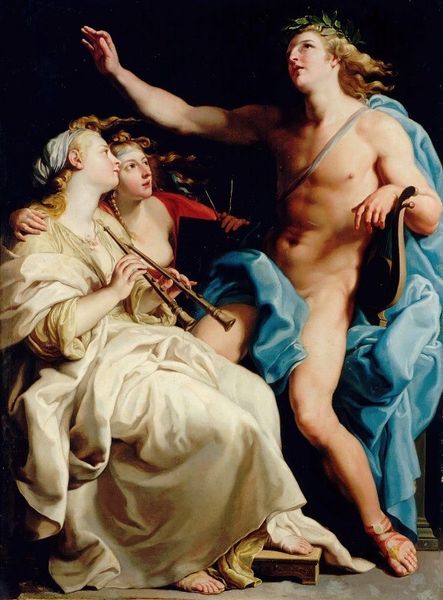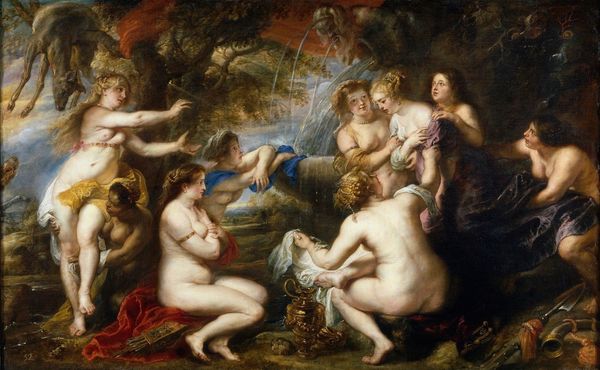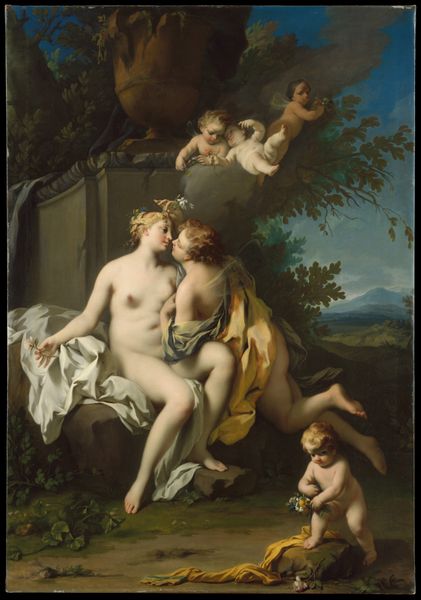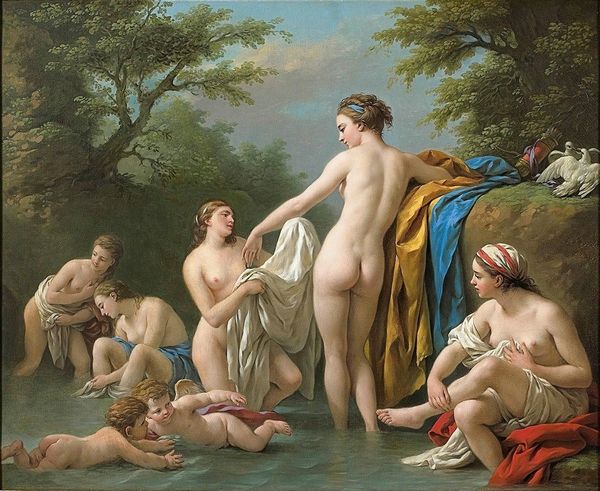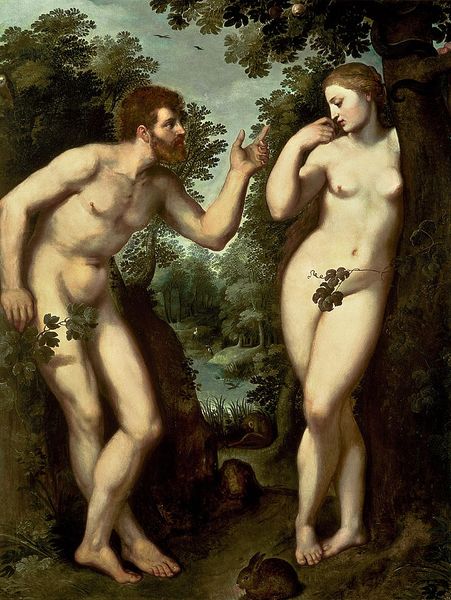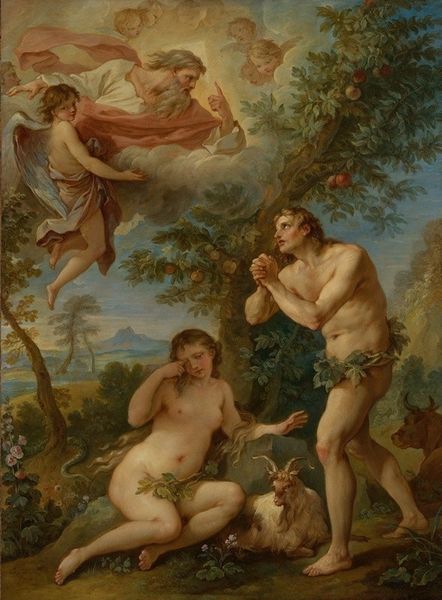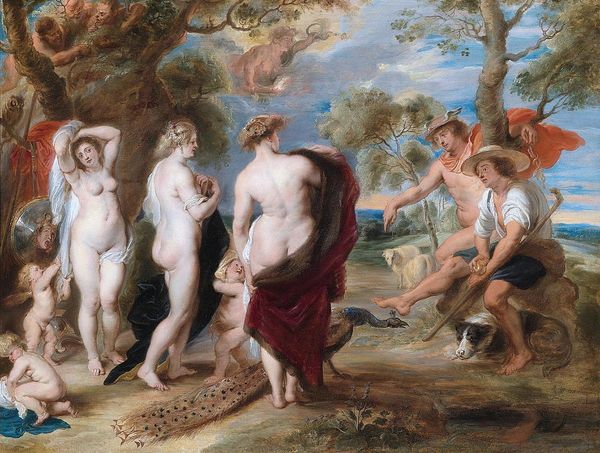
painting, oil-paint
#
portrait
#
allegory
#
baroque
#
painting
#
oil-paint
#
figuration
#
oil painting
#
portrait reference
#
group-portraits
#
animal portrait
#
mythology
#
history-painting
#
nude
#
portrait art
Copyright: Public Domain: Artvee
Editor: So, this is Peter Paul Rubens' "Ceres With Two Nymphs," painted in 1624 with oil paint. It feels like such an abundant, almost overflowing image! There's so much fruit, so much flesh...it's quite sensual, really. How do you interpret this work? Curator: The abundance is key. Rubens painted this during a time of both immense wealth for some, and widespread agricultural struggles for others. The figure of Ceres, the Roman goddess of agriculture, is centrally placed, seemingly dispensing the Earth's bounty. But who is truly benefiting? Notice the knowing gaze of the leftmost nymph; is she a passive recipient, or does she participate in a broader economic transaction we are not seeing in full? Editor: That’s a really interesting point, the economic aspect of it. I was initially focused on the mythological aspects and the almost idealized figures. The wealth is evident with those fruits. Curator: And what about the placement of the figures in a composition meant to look effortless, yet very clearly planned and organized? We should be asking who this painting was made *for.* Consider the patronage system. Baroque art often served as a display of power and affluence for the elite, reinforcing their dominance. Did the art play into an idea, or myth, that society then liked to adopt as 'real'? Editor: That definitely shifts my perspective. I guess I saw it as this timeless celebration of nature and beauty, but now I see the art serving a political purpose, reflecting social structures. It makes it so much more than just an arrangement of figures. Curator: Exactly. And by acknowledging this, we can also analyze what's excluded from this vision of bounty: The laborers, the exploited lands, and the realities of early 17th-century life for most. This art presents not just a view of wealth, but an ideological statement about societal organization. Editor: Thanks! It’s helpful to remember how profoundly art is linked to historical context and power dynamics. Curator: Indeed. Considering the power of patronage shifts the analysis from a simple mythological portrayal to understanding it as a reinforcement of status through imagery.
Comments
No comments
Be the first to comment and join the conversation on the ultimate creative platform.

